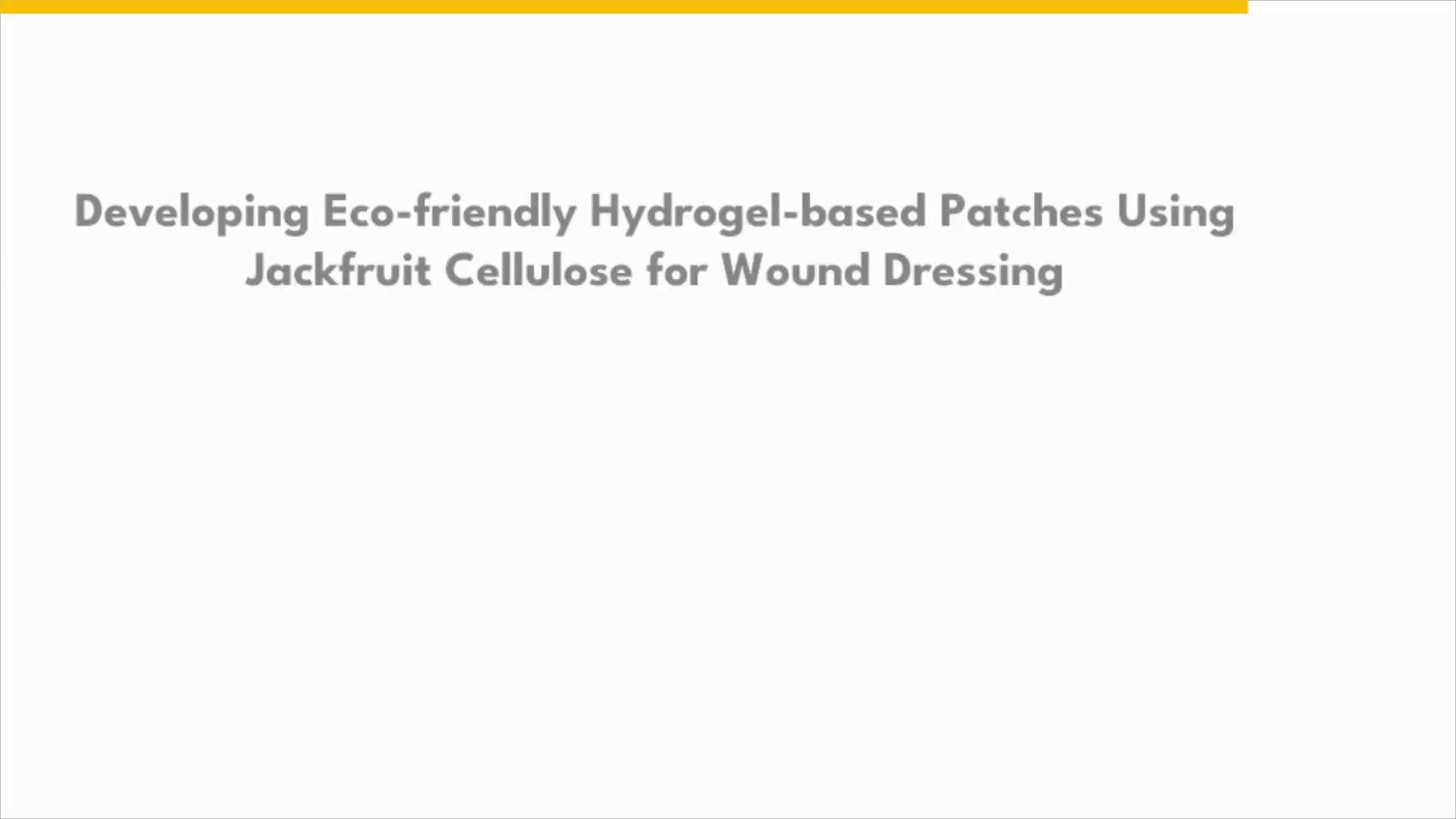
Page 1 (0s)
Developing Eco-friendly Hydrogel-based Patches Using Jackfruit Cellulose for Wound Dressing.
Page 2 (20s)
Jackfruit Husks as Waste. Jackfruit husks typically considered waste and constitute significant portion of fruit's weight Food processing companies discard husk, using only flesh and seeds Plan: Collect husk and extract cellulose for further processing Existing Medical patches in market are primarily PVC-based Jackfruit cellulose offers advantages of non-toxicity, biocompatibility, biodegradability, and sustainability.
Page 3 (43s)
Lack of naturalbased patches. Synthetic materials and their drawbacks.
Page 4 (1m 18s)
abstract. Development of Hydrogel-based Patches. Proposal: Utilize jackfruit cellulose to create hydrogel-based Patches Enhance antibacterial properties and mechanical stability Cellulose-based hydrogels naturally decompose within 1-2 months Advantages over synthetic counterparts: non-toxicity, biocompatibility, biodegradability, and sustainability Provide high exudate capacity, pain reduction, and ease of handling for wound dressing.
Page 5 (1m 42s)
The technology is currently being commercialized by Chalmers spinoff company Amferia.
Page 6 (1m 57s)
Hemigraphis Colorata - Buy Aquarium Plants and Aquarium Fishes Online.
Page 7 (2m 16s)
Market Potential. Global hydrogel dressing market projected to witness significant growth Market size valued at USD 849.23 million in 2021 Expected compound annual growth rate (CAGR) of 4.28% from 2022 to 2030 Increased demand due to rising chronic and acute wound population Hydrogel dressing aids in treatment of chronic wounds Opportunity to develop a cost-effective and sustainable product.
Page 8 (2m 43s)
Timeline and Production. Prototype development estimated to take one year with 2-4 group members Registration planned with Bionest in Kalamassery 6 months for fabrication of hydrogel and another 6 months for validation Product expected to be cost-effective with confirmatory tests and clinical trials Scaling up production based on market approval.
Page 9 (3m 4s)
Future Plans. Explore development of other biomedical applications Focus on drug delivery systems and biosensors Monitor wound healing and expand product range Continued research and innovation in the field.